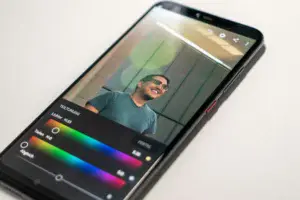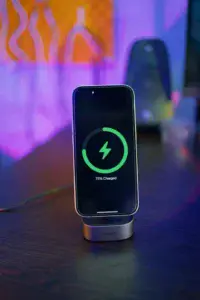
Tips for Optimizing Your Smartphone’s Battery Life
Smartphones have become our daily companions, keeping us connected, entertained, and productive. But let’s be honest—nothing’s more frustrating than glancing down at your phone and seeing the dreaded red battery icon. Whether you’re at work, traveling, or just out running errands, a dying phone always seems to strike at the worst time.
The good news? With just a few adjustments and smart habits, you can stretch your battery life and keep your phone running longer between charges. In this post, we’ll break down practical steps to help you optimize your smartphone’s battery without sacrificing too much performance or convenience.
Adjusting Screen and Display Settings
Your phone’s display is usually the biggest power-hungry feature. Luckily, small changes here can have a huge impact on battery life.
- Lower Brightness: Keeping your brightness high all the time drains power fast. Try
 lowering it manually or use auto-brightness so your phone adjusts based on your environment.
lowering it manually or use auto-brightness so your phone adjusts based on your environment. - Use Dark Mode: If your phone has an OLED or AMOLED screen, dark mode saves power because pixels in dark areas don’t need as much energy.
- Shorten Screen Timeout: Every second your screen stays on eats up battery. Adjust your screen timeout to 30 seconds or less if you often forget to lock your phone.
- Reduce Refresh Rate (if available): Some newer phones offer high refresh rates (90Hz or 120Hz), which look great but drain the battery. Switching to 60Hz can make a noticeable difference.
Common issue: People often crank brightness back up when outside in the sun and forget to lower it later. Keeping auto-brightness on can prevent this.
Managing Apps and Background Activity
Even when you’re not actively using them, apps can quietly drain your battery in the background. Managing them wisely is key.
- Check Battery Usage: Most smartphones have a battery usage section in settings where you can see which apps are using the most power. If something looks suspicious, limit its activity.
- Restrict Background Activity: Many apps constantly check for updates, notifications, or location data. You can limit or disable background refresh for apps you don’t need running all the time.
- Turn Off Location Services (when not needed): GPS is one of the most power-hungry features. Unless you’re navigating, turn it off or limit location permissions to “while using the app.”
- Close Unused Apps: While modern operating systems are good at managing resources, keeping too many apps open at once can still contribute to battery drain.
Common issue: Social media apps and messaging platforms are often the biggest culprits because they run updates constantly. Managing their permissions can make a huge difference.
Utilizing Built-In Battery Saving Features
Most modern smartphones come with battery-saving tools built right in—you just have to turn them on.
- Battery Saver/Low Power Mode: These features automatically reduce background activity, lower performance slightly, and limit visual effects to save energy.
- Adaptive Battery (Android): Some Android phones learn your usage patterns and limit apps you rarely use, keeping them from draining power in the background.
- Optimized Charging (iOS and Android): Phones now include smart charging features that slow the charge when your battery hits around 80%, helping preserve long-term battery health.
- Turn Off What You Don’t Need: Bluetooth, Wi-Fi, and mobile data all use power. If you’re not using them, switching them off can help.
Common issue: Many users forget to turn these features on until their phone is already at 5%. Try enabling them proactively when you know you’ll be away from a charger for a while.
Smart Charging and Hardware Tips
How you charge and care for your battery can affect both short-term performance and long-term health.
- Avoid Full Drains: Today’s lithium-ion batteries don’t need to be fully drained before recharging. In fact, letting them hit 0% too often can shorten their lifespan.
- Keep It Between 20% and 80%: Charging in this range helps extend battery life over the long term. For more about new phone technologies, visit the latest mobile devices page.
- Use the Right Charger: Stick to the manufacturer’s charger or a certified alternative. Cheap knock-off chargers can harm your battery or even be unsafe. Learn about hardware issues if your phone or charger stops working properly.
- Don’t Overheat Your Phone: Heat is the enemy of batteries. Avoid charging your phone under a pillow or leaving it in a hot car.
- Wireless Charging Caution: Wireless charging is convenient but can generate
 more heat. If you’re focused on long-term battery health, use it sparingly.
more heat. If you’re focused on long-term battery health, use it sparingly.
Common issue: Many people leave their phone plugged in overnight. While most modern phones are smart enough to stop overcharging, the extra heat from long charging sessions can still cause wear over time. To keep your phone running smoothly and cool, you might also be interested in these tips for speeding up your computer’s performance.
Conclusion: Get More Out of Every Charge
Your smartphone’s battery doesn’t have to feel like a daily battle. By adjusting your screen settings, keeping apps in check, taking advantage of built-in tools, and practicing good charging habits, you can easily add hours to your battery life each day—and extend its health in the long run.
Remember, it’s not about sacrificing convenience but about making smarter choices. The little changes you make today can keep your phone running smoother for months (or even years) to come.
Do you have a favorite trick for squeezing out more battery life? Share your tips in the comments—I’d love to hear how you keep your phone powered up! 🔋📱

 lowering it manually or use auto-brightness so your phone adjusts based on your environment.
lowering it manually or use auto-brightness so your phone adjusts based on your environment. more heat. If you’re focused on long-term battery health, use it sparingly.
more heat. If you’re focused on long-term battery health, use it sparingly.